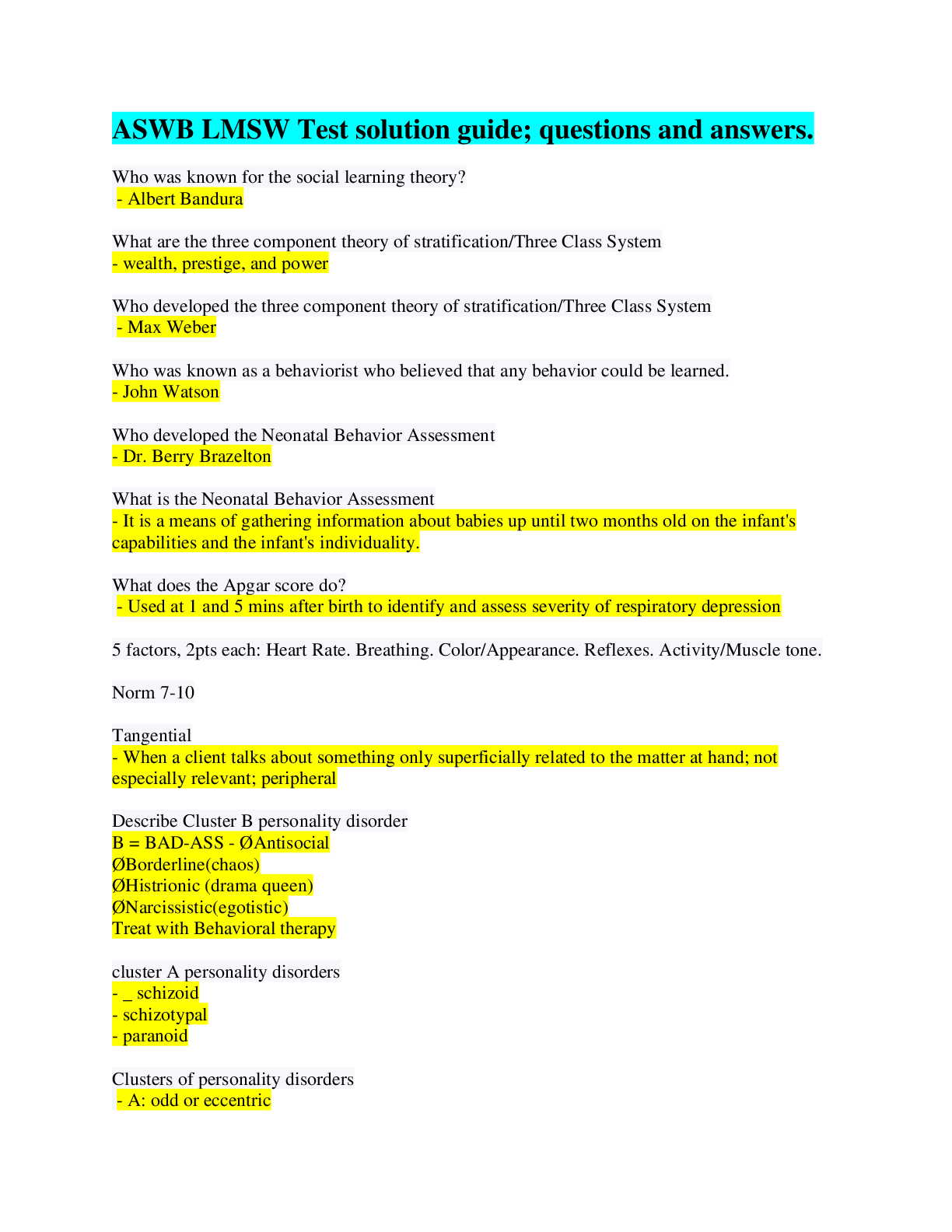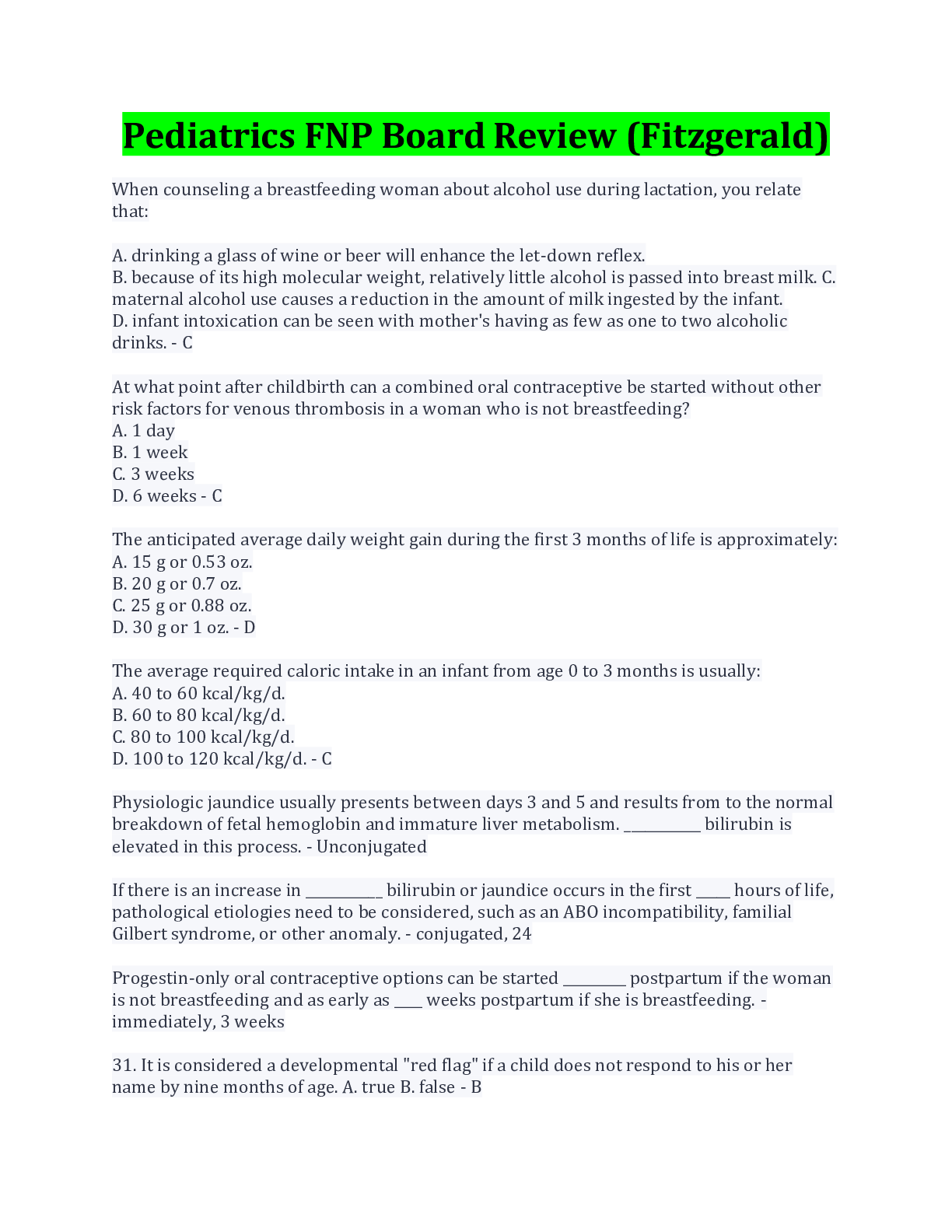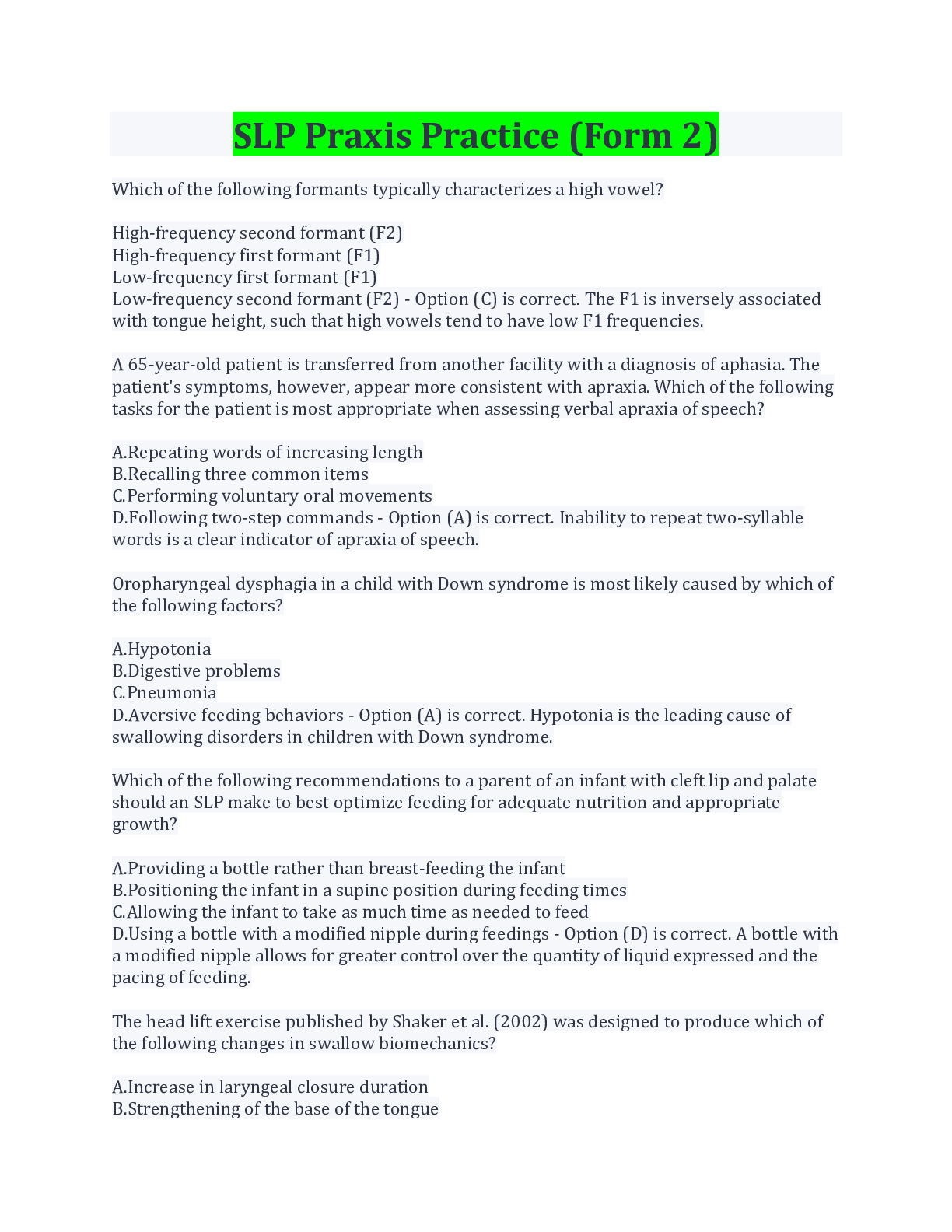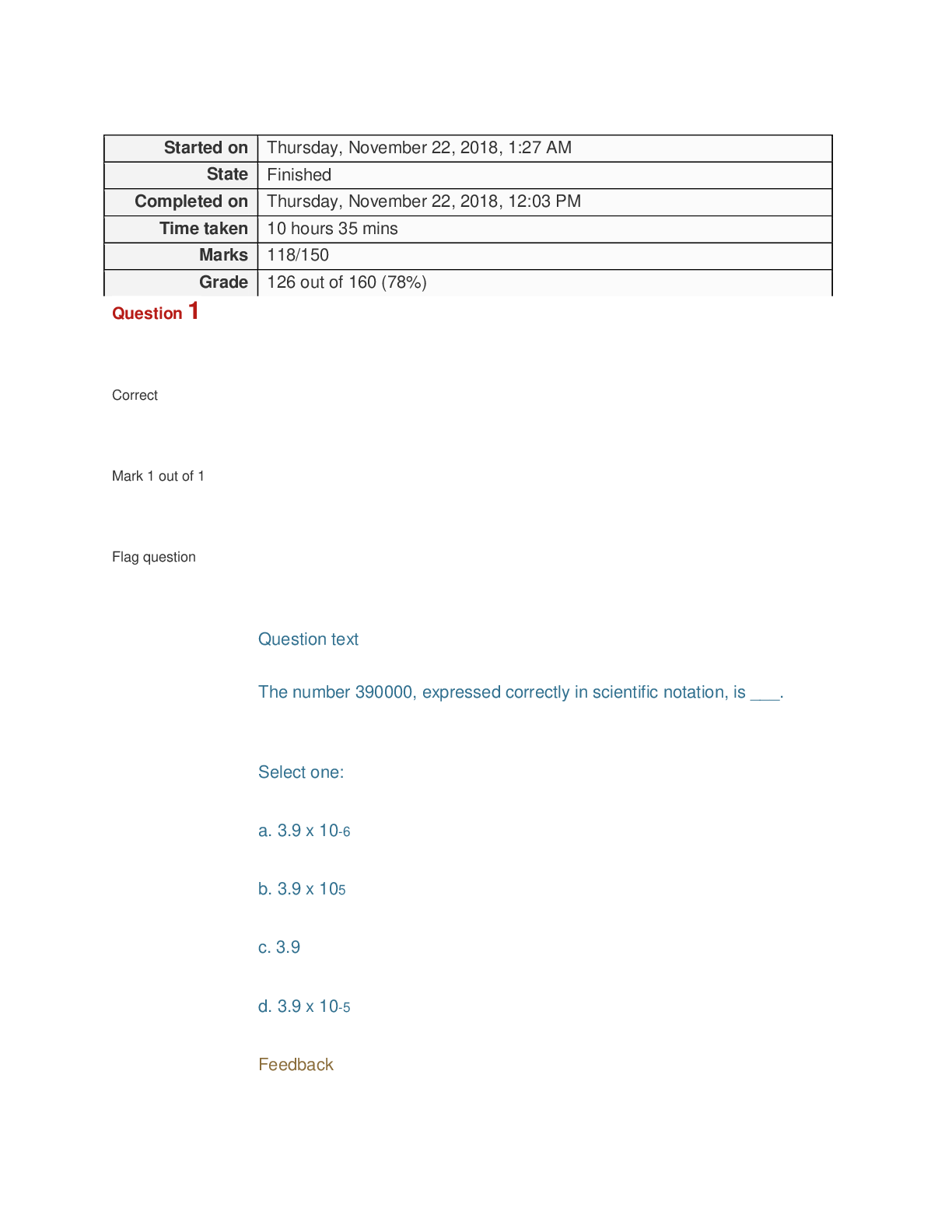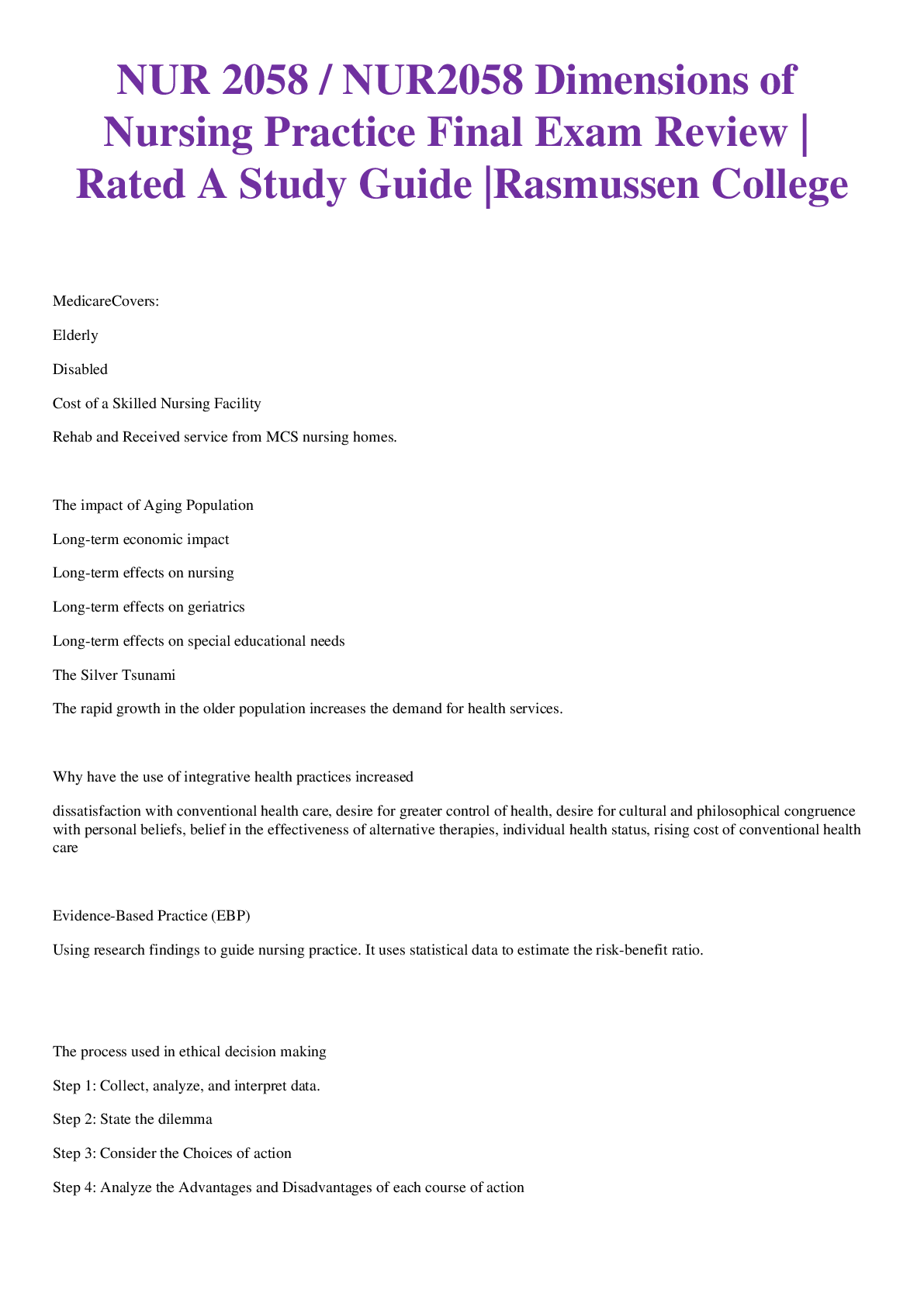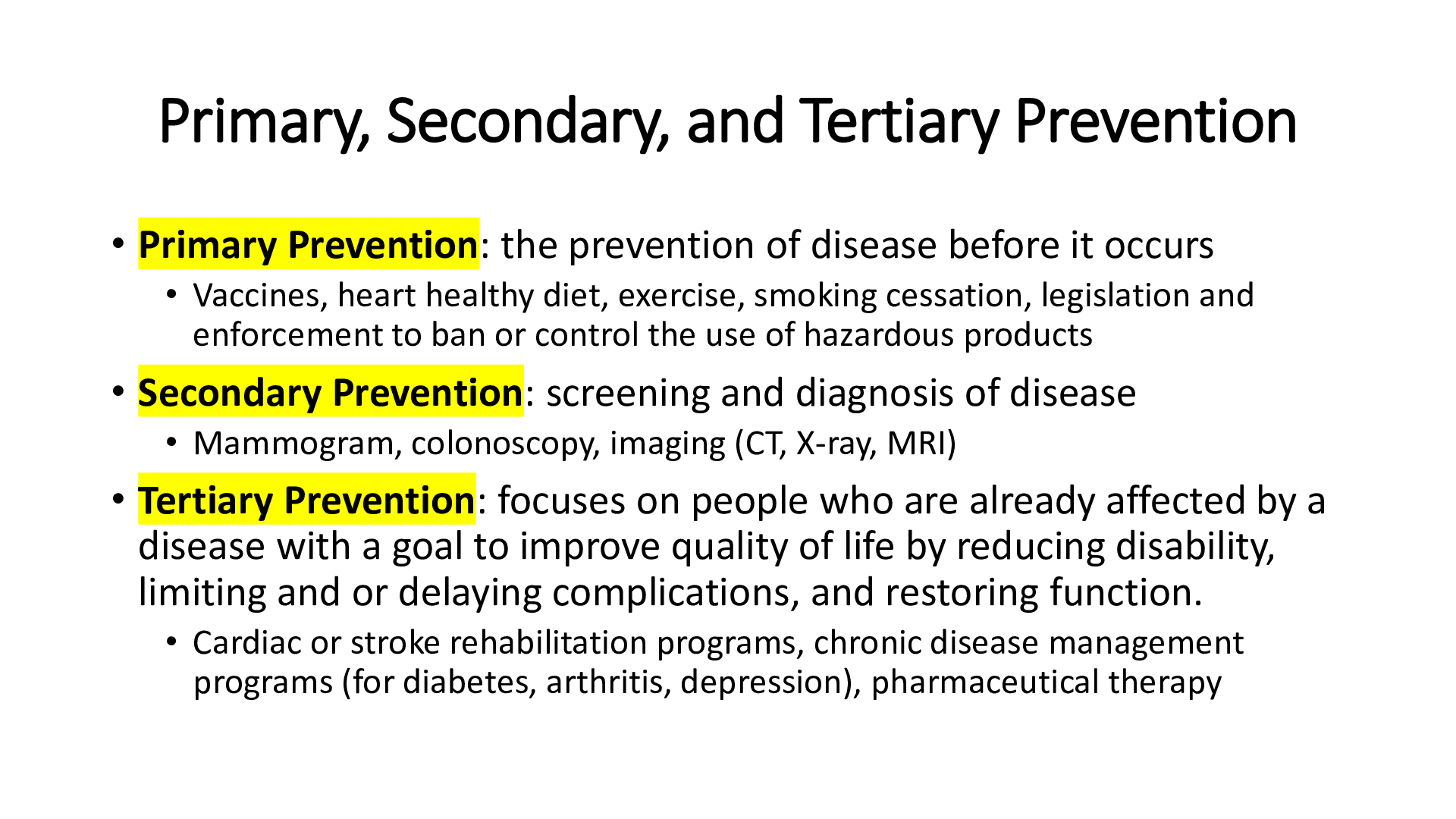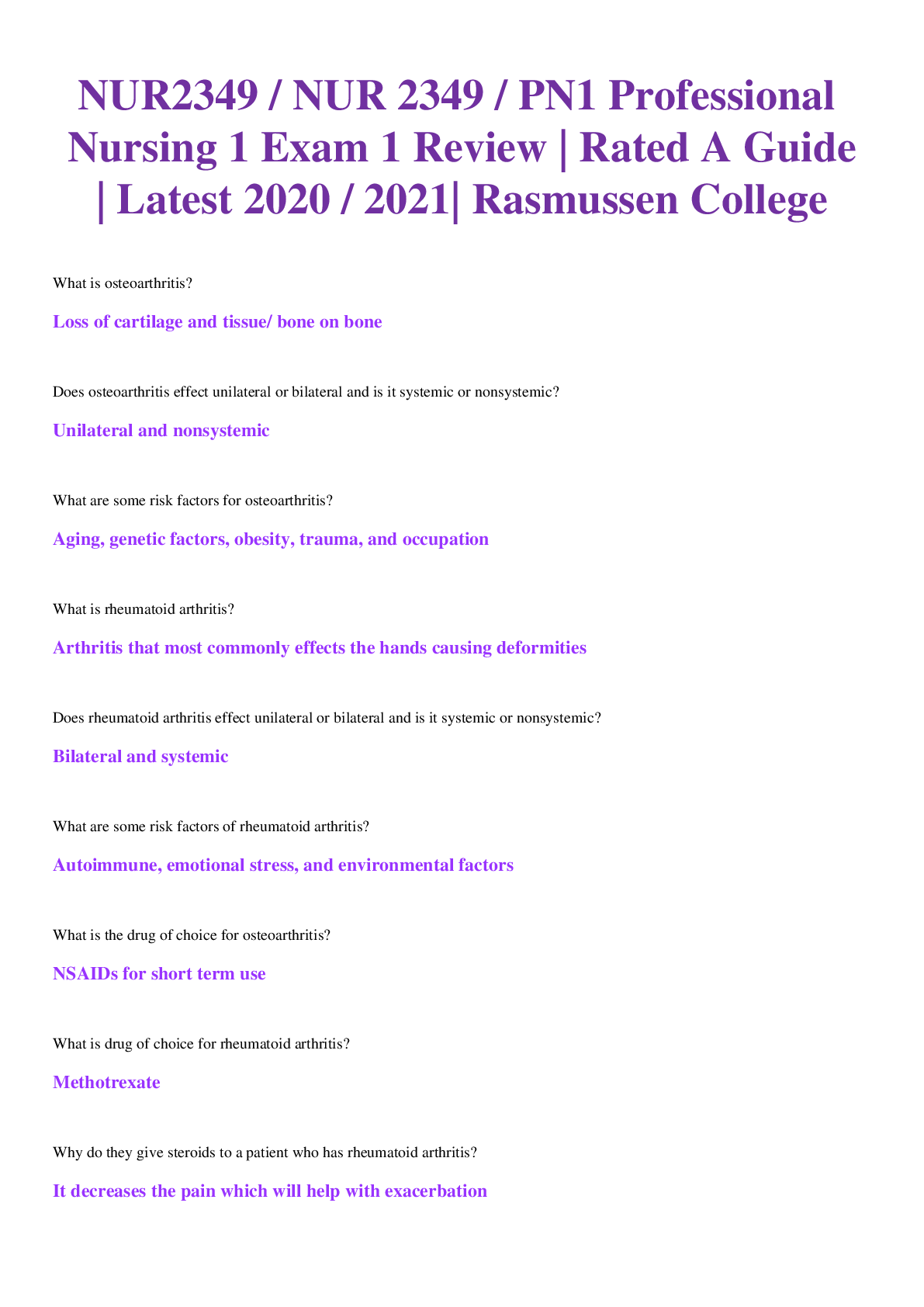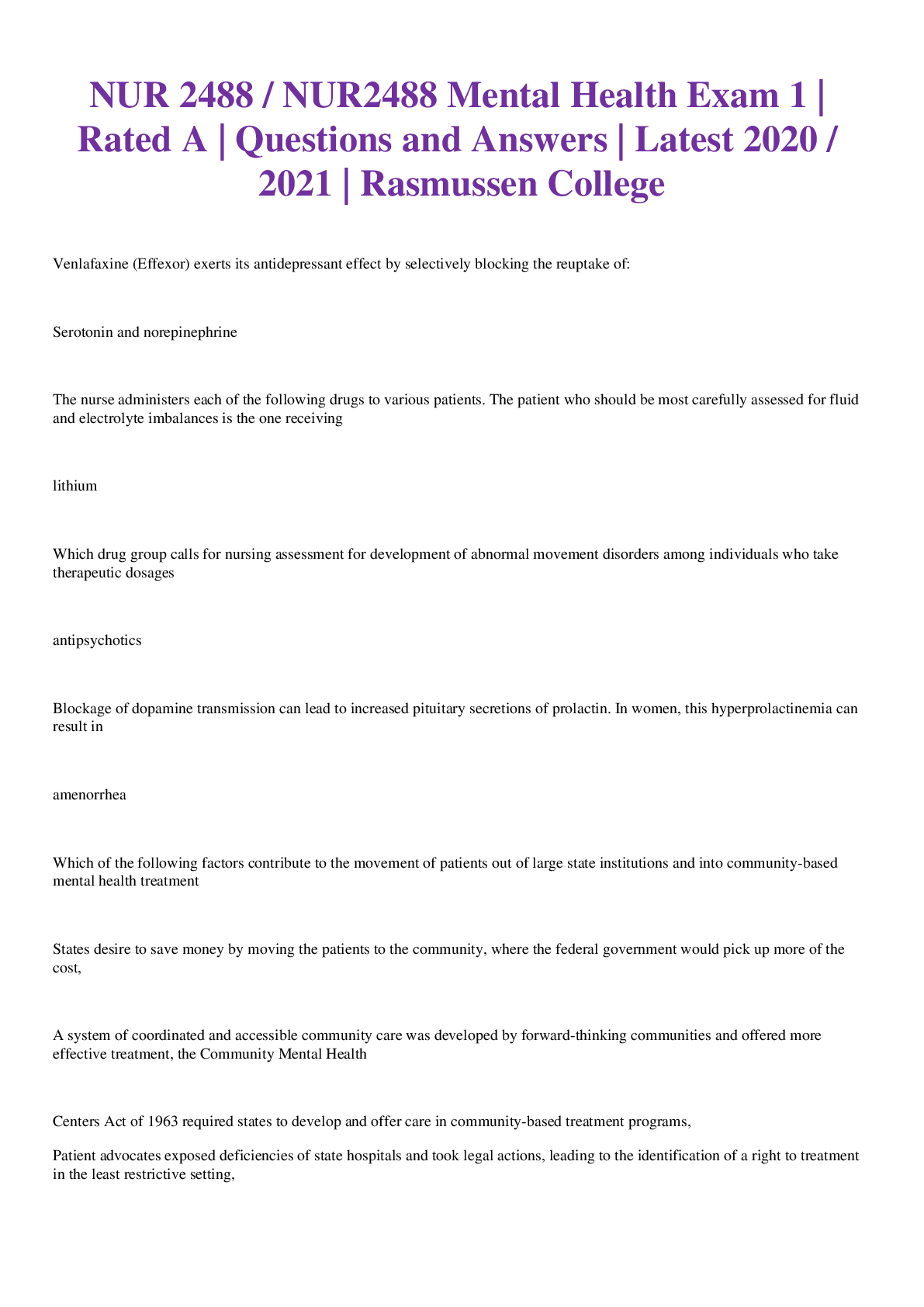Computer Networking > EXAM REVIEW > NET + n10-008 / N10 008/ NET + n10-008 Test Prep (200 Questions & Answers Elaborated deeply ) all co (All)
NET + n10-008 / N10 008/ NET + n10-008 Test Prep (200 Questions & Answers Elaborated deeply ) all correct_2022.
Document Content and Description Below
NET + n10-008 Test Prep (200 Questions & Answers) all correct_2022. Which of the following organizations developed the Open Systems Interconnection (OSI) model? A. International Telecommunication... Union (ITU-T) B. Comité Consultatif International Télégraphique et Téléphonique (CCITT) C. American National Standards Institute (ANSI) D. Institute of Electrical and Electronics Engineers (IEEE) E. International Organization for Standardization (ISO) - E. ISO developed and published the OSI model to serve as a conceptual model for software and hardware developers. The ITU-T, formerly known as the CCITT, coordinates the development and advancement of international telecommunication networks and services. ANSI is a private organization that administers and coordinates a United States-based standardization and conformity assessment system. The IEEE publishes standards that define data link and physical layer standards. These standards are referred to collectively as the 802 series At which of the following layers of the Open Systems Interconnection (OSI) model do the protocols on a typical local area network (LAN) use media access control (MAC) addresses to identify other computers on the network? A. Physical B. Data link C. Network D. Transport - B. The Ethernet (or IEEE 802.3) protocol at the data link layer uses MAC addresses to idenitify computers on the local network. MAC addresses are coded into the firmware of physical network interface adapters by the manufacturer. The physical layer deals with signals and is not involved in addressing. The IP protocol at the network layer has its own addressing system. The transport layer protocols are not involved in addressing. Which layer of the Open Systems Interconnection (OSI) model is responsible for the logical addressing of end systems and the routing of datagrams on a network? A. Physical B. Data link C. Network D. Transport E. Session F. Presentation G. Application - C. Network layer protocols (such as IP) contain headers that specify logical addresses for end system communication and route datagrams across a network. The physical layer defines standards for physical and mechanical characteristics of a network. The data link layer uses media access control (MAC) or hardware addresses, not logical addresses. The transport layer uses port numbers, not logical addresses. Session layer protocols create and maintain a dialogue between end systems. Presentation layer protocols are responsible for the formatting, translation, and presentation of information. The application layer provides an entry point for applications to access the protocol stack and prepare information for transmission across a network. On a TCP/IP network, which layers of the Open Systems Interconnection (OSI) model contain protocols that are responsible for encapsulating the data generated by an application, creating the payload for a packet that will be transmitted over a network? (Choose all that apply.) A. Physical B. Data link C. Network D. Transport E. Session F. Presentation G. Application - B, C, D. Before the payload data generated by an application can be transmitted over a TCP/ IP network, the system must encapsulate it by applying protocol headers and footers at three layers of the OSI model. The data link layer applies a header and footer to create an Ethernet frame. The network layer applies a header to create an IP datagram. The transport layer applies a TCP or UDP header to create a segment or datagram. The other model layers are involved in the payload transmission process, but they do not encapsulate the payload. What layer of the Open Systems Interconnection (OSI) model is responsible for translating and formatting information? A. Physical B. Data link C. Network D. Transport E. Session F. Presentation G. Application - F. The presentation layer implements functions that provide formatting, translation, and presentation of information. No other layers of the OSI model translate and format application data. Which of the following devices typically operates at the network layer of the Open Systems Interconnection (OSI) model? A. Proxy server B. Hub C. Network interface adapter D. Router - D. A router connects networks at the network layer of the OSI model. Proxy servers operate at the application layer. Network interface adapters operate at both the data link and the physical layers. Hubs are physical layer devices. Which layer of the Open Systems Interconnection (OSI) model provides an entrance point to the protocol stack for applications? A. Physical B. Data link C. Network D. Transport E. Session F. Presentation G. Application - G. The application layer provides an entry point for applications to access the protocol stack and prepare information for transmission across a network. All other layers of the OSI model reside below this layer and rely on this entry point. Which layer of the Open Systems Interconnection (OSI) model is responsible for dialogue control between two communicating end systems? A. Physical B. Data link C. Network D. Transport E. Session F. Presentation G. Application - E. The session layer is responsible for creating and maintaining a dialogue between end systems. This dialogue can be a two-way alternate dialogue that requires end systems to take turns transmitting, or it can be a two-way simultaneous dialogue in which either end system can transmit at will. No other layers of the OSI model perform dialogue control between communicating end systems Some switches can perform functions associated with two layers of the Open Systems Interconnection (OSI) model. Which two of the following layers are often associated with network switching? (Choose all that apply.) A. Physical B. Data link C. Network D. Transport E. Session F. Presentation G. Application - B, C. The primary function of a switch is to process packets based on their media access control (MAC) addresses, which makes it a data link layer device. However, many switches can also perform routing functions based on IP addresses, which operate at the network layer. At which layer of the Open Systems Interconnection (OSI) model are there TCP/IP protocols than can provide either connectionless or connection-oriented services to applications? A. Physical B. Data link C. Network D. Transport E. Session F. Presentation G. Application - D. There are two types of transport layer protocols: connection-oriented and connectionless. Connection-oriented protocols guarantee the delivery of data from source to destination by creating a connection between the sender and the receiver before any data is transmitted. Connectionless protocols do not require a connection between end systems in order to pass data. The physical layer does not use connectionless or connection-oriented protocols; it defines standards for transmitting and receiving information over a network. The data link layer provides physical addressing and final packaging of data for transmission. The network layer is responsible for logical addressing and routing. The session layer is responsible for creating and maintaining a dialogue between end systems. The presentation layer is responsible for the formatting, translation, and presentation of information. The application layer provides an entry point for applications to access the protocol stack and prepare information for transmission across a network. Which of the following layers of the Open Systems Interconnection (OSI) model typically have dedicated physical hardware devices associated with them? (Choose all that apply.) A. Physical B. Data link C. Network D. Transport E. Session F. Presentation G. Application - A, B, C. The physical layer of the OSI model is associated with hubs, cables, and network interface adapters. The data link layer is associated with bridges and switches. The network layer is associated with routers. The transport, session, presentation, and application layers are typically not associated with dedicated hardware devices. At which layer of the Open Systems Interconnection (OSI) model is there a protocol that adds both a header and footer to the information that is passed down from an upper layer, thus creating a frame? A. Physical B. Data link C. Network D. Transport E. Session F. Presentation G. Application - B. The only layer with a protocol (such as Ethernet) that adds both a header and a footer is the data link layer. The process of adding the headers and footers is known as data encapsulation. All other protocol layers that encapsulate data add just a header. Identify the layer of the Open Systems Interconnection (OSI) model that controls the addressing, transmission, and reception of Ethernet frames, and also identify the media access control method that Ethernet uses. A. Physical layer; Carrier Sense Multiple Access with Collision Detection (CSMA/CD) B. Physical layer; Carrier Sense Multiple Access with Collision Avoidance (CSMA/CA) C. Data link layer; CSMA/CD D. Data link layer; CSMA/CA - C. The Ethernet protocol that handles the addressing, transmission, and reception of frames operates at the data link layer. Each frame includes hardware addresses that identify the sending and receiving systems on the local network. Ethernet uses the CSMA/CD media access control method. Physical layer specifications include the transmission of signals in the form of electrical or light pulses to represent binary code, not frames. CSMA/CA is a data link layer media access control method used by wireless LAN protocols, but not Ethernet. At which layer of the OSI model do you find the protocol responsible for the delivery of data to its ultimate destination on an internetwork? A. Data link B. Network C. Session D. Application - B. On a TCP/IP network, the Internet Protocol (IP) at the network layer is the protocol responsible for the delivery of data to its final destination. Data link layer protocols are only concerned with communication between devices on a Local Area Network (LAN) or between two points connected by a Wide Area Network (WAN) link. The session and application layers are not involved in the actual delivery of data Which of the following is not a protocol operating at the network layer of the OSI model? A. IP B. ICMP C. IGMP D. IMAP - D. Internet Protocol (IP), Internet Control Message Protocol (ICMP), and Internet Group Message Protocol (IGMP) are all network layer protocols. Internet Message Access Protocol (IMAP) is a mail protocol that operates at the application layer. Ed is a software developer who has been given the task of creating an application that requires guaranteed delivery of information between end systems. At which layer of the Open Systems Interconnection (OSI) model does the protocol that provides the guaranteed delivery run, and what type of protocol must Ed use? A. Data link layer; connectionless B. Network layer; connection-oriented C. Transport layer; connection-oriented D. Application layer; connectionless - C. A connection-oriented transport layer protocol, such as Transmission Control Protocol (TCP), provides guaranteed delivery of data for upper layer applications. Connectionless protocols do not guarantee delivery of information and therefore are not a good choice. Guaranteed delivery of information is generally not a function of the data link, network, or application layer. Which of the following devices operates only at the physical layer of the Open Systems Interconnection (OSI) model? A. Hub B. Bridge C. Switch D. Router - A. A hub functions only at the physical layer by forwarding all incoming signals out through all of its ports. Bridges and switches operate at the data link layer by selectively propagating incoming data. Routers operate at the network layer by connecting local area networks (LANs) and propagating only the traffic intended for another network, based on IP addresses Alice is a network administrator designing a new Local Area Network (LAN). She needs to determine the type of cabling and the network topology to implement. Which layers of the Open Systems Interconnection (OSI) model apply to cabling and topology elements? A. Physical and data link layers B. Data link and network layers C. Network and transport layers D. Transport and application layers - A. The physical layer defines the mechanical and electrical characteristics of the cables used to build a network. The data link layer defines specific network (LAN or WAN) topologies and their characteristics. The physical layer standard that Alice will implement is dependent on the data link layer protocol she selects. The network, transport, and application layers are not concerned with cables and topologies. Which layers of the Open Systems Interconnection (OSI) model do not have protocols in the TCP/IP suite exclusively dedicated to them? (Choose all that apply.) A. Physical B. Data link C. Network D. Transport E. Session F. Presentation G. Application - E, F. In the TCP/IP suite, the functions of the session layer are primarily implemented in the transport layer protocols: Transmission Control Protocol (TCP) and User Datagram Protocol (UDP). The presentation layer functions are often implemented in application layer protocols, although some functions, such as encryption, can also be performed by transport or network layer protocols. The protocols at which layer of the Open Systems Interconnection (OSI) model use port numbers to identify the applications that are the source and the destination of the data in the packets? A. Application B. Presentation C. Transport D. Network - . Transport layer protocols, such as Transmission Control Protocol (TCP) and User Datagram Protocol (UDP), have header fields that contain the port numbers of the applications that generated the data in the packet and which will receive it. The application, presentation, and network layers do not use port numbers. Which of the following is a correct listing of the Open Systems Interconnection (OSI) model layers, in order, from top to bottom? A. Physical, data link, transport, network, session presentation, application B. Application, session, presentation, transport, network, data link, physical C. Presentation, application, transport, session, network, physical, data link D. Session, application, presentation, transport, data link, network, physical E. Application, presentation, session, transport, network, data link, physical - E. The correct order of the OSI model layers, from top to bottom, is application, presentation, session, transport, network, data link, physical. At which of the Open Systems Interconnection (OSI) model layers do switches and bridges perform their basic functions? A. Physical B. Data link C. Network D. Transport - B. Switches and bridges are involved in Local Area Network (LAN) communications only and therefore primarily at the data link layer. They are not primarily associated with the physical, network, or transport layers, although some switches include network layer routing capabilities On a TCP/IP network, flow control is a function implemented in protocols operating at CONTINUES.................................................... [Show More]
Last updated: 1 year ago
Preview 1 out of 58 pages
 all correct_2022.png)
Reviews( 0 )
Document information
Connected school, study & course
About the document
Uploaded On
Aug 19, 2022
Number of pages
58
Written in
Additional information
This document has been written for:
Uploaded
Aug 19, 2022
Downloads
0
Views
105


